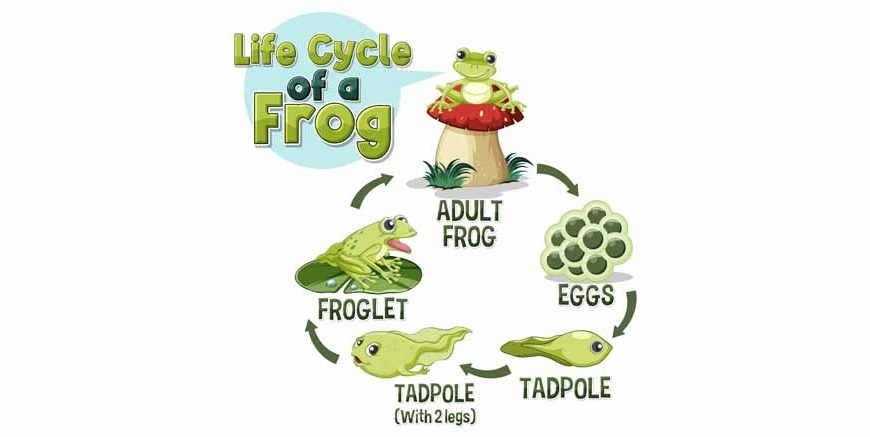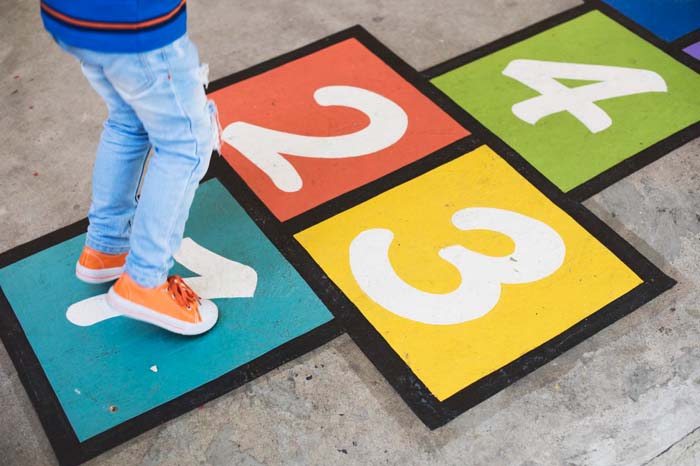Frogs are a source of curiosity for kids because of their exotic appearance. Their smooth and moist skin, bulging eyes, long and powerful hind legs, webbed feet, and short bodies without a tail definitely make them exotic, especially those with vibrant colours and unique patterns. But it’s not just their appearance that sparks curiosity; their life cycle is just as fascinating and full of wonder!
In this blog, we will look at frog life cycle stages, give some interesting frog life cycle facts, and provide the most useful life cycle of frog information for young learners.
What is the Frog Life Cycle?
The frog life cycle narrates the frog’s metamorphosis from egg to adult frog. There are four phases of the frog’s life cycle: eggs, tadpoles, young froglets, and mature adults. Each stage is different and important in the frog’s life.
Frog Life Cycle Stages
To break down the frog life cycle for kids, we’ll look at its four main stages:
- First Stage: Egg
- Second Stage: Tadpole
- Third Stage: Froglet
- Fourth Stage: Adult Frog
The frog life cycle starts with eggs. Frogs are aquatic egg layers: females lay hundreds of eggs in water, often clustered in a jellylike mass called spawn. These eggs are typically located in ponds, lakes, or perhaps even temporary rainfall ponds.
Fun Fact: During the rainy season in India, frog eggs can be found in small puddles or village ponds.
Did You Know? Frog eggs prey on fish and birds, so frogs release so many eggs at once.
The eggs then hatch into tadpoles after a few days. Tadpoles resemble little fish—they have tails and no legs. They have gills and swim through the water, feeding on algae and plants.
Fun Fact: Tadpoles are some of the best swimmers, and they use their tails to move through the water.
Did You Know? During this phase, tadpoles remain purely aquatic and cannot live outside water.
The tadpole grows, develops legs, and loses its tail. This is called the froglet stage. The tadpole starts to resemble a tiny frog, except it still has a little tail.
Fun Fact: A froglet has gills for underwater breathing and lungs for land breathing.
Did You Know? Also, during this stage, the froglet begins to eat insects rather than just plants.
These are known as froglets, and eventually, the froglet becomes an adult. The tail vanishes entirely, and the frog develops powerful legs for both jumping and swimming. Adult frogs are amphibious and are cunning predators, consuming insects, worms and occasionally small fish.
Fun Fact: Frogs can catch their prey with their tongues at very fast speeds.
Did You Know? Adult frogs return to water to lay eggs, repeating the frog life cycle stages.
Frog Life Cycle Facts
Check out these terrific frog life cycle facts that will surprise and delight children.
- Frogs can breathe through their skin. Frogs have thin, moist skin that absorbs oxygen through the skin, particularly when underwater.
- Some frogs bypass the tadpole stage, such as Coqui frogs, which hatch as small frogs.
- Frog populations are sensitive to pollution and can reflect the health of an ecosystem. They serve as environmental indicators.
- Frogs can hibernate. Frogs crawl into mud and hibernate until it warms up.
- From tiny to tremendous, the world of frogs has some amazing extremes! The minuscule Paedophryne amanuensis is so small it could sit comfortably on a dime, while the giant Goliath frog can stretch out to a whopping 32 cm!
Why Are Frogs Important?
Frogs are an important part of the ecosystem. They help to keep insect populations in check by devouring pests such as mosquitoes and flies. They are also food for larger animals, such as birds, snakes, and some fish. India is particularly rich in amphibians, but they are especially crucial during monsoon season.
Learning about frog life cycles and how they are an important part of nature can make kids want to help protect these incredible creatures and their homes.
Kids Activities for Learning the Frog Life Cycle
Here are a few fun and educational activities to teach kids about the frog life cycle:
- Frog Life Cycle Chart: Show the stages of a frog’s life with pictures or drawings.
- Hike to a Pond: Go for a hike to a nearby pond or lake to see frogs in their habitat.
- Read Books about Frogs: There are numerous children’s books that talk about the life cycle of frog in an enjoyable and educational manner.
Create a Frog Life Cycle Model: Use clay or paper to model the different stages of a frog life cycle in 3D.
Conclusion
The frog life cycle is a great example of how creative and adaptable nature can be. Children can learn about the frog life cycle to gain a deeper understanding of these incredible amphibians and the vital role they play in our ecosystem. Want to teach your little one about the ecosystem? Check out our blog, Ecosystem: Definition, Structure, Function, And Types, for more information. Also, don’t forget to check out EuroKids Blogs for more insights into your kid’s development, nutrition, and learning.
EuroKids offers early education in a fun and engaging manner to nurture a young mind. We believe curriculum should ignite curiosity and a love for learning in children. Visit EuroKids now to learn more about our Programs!














